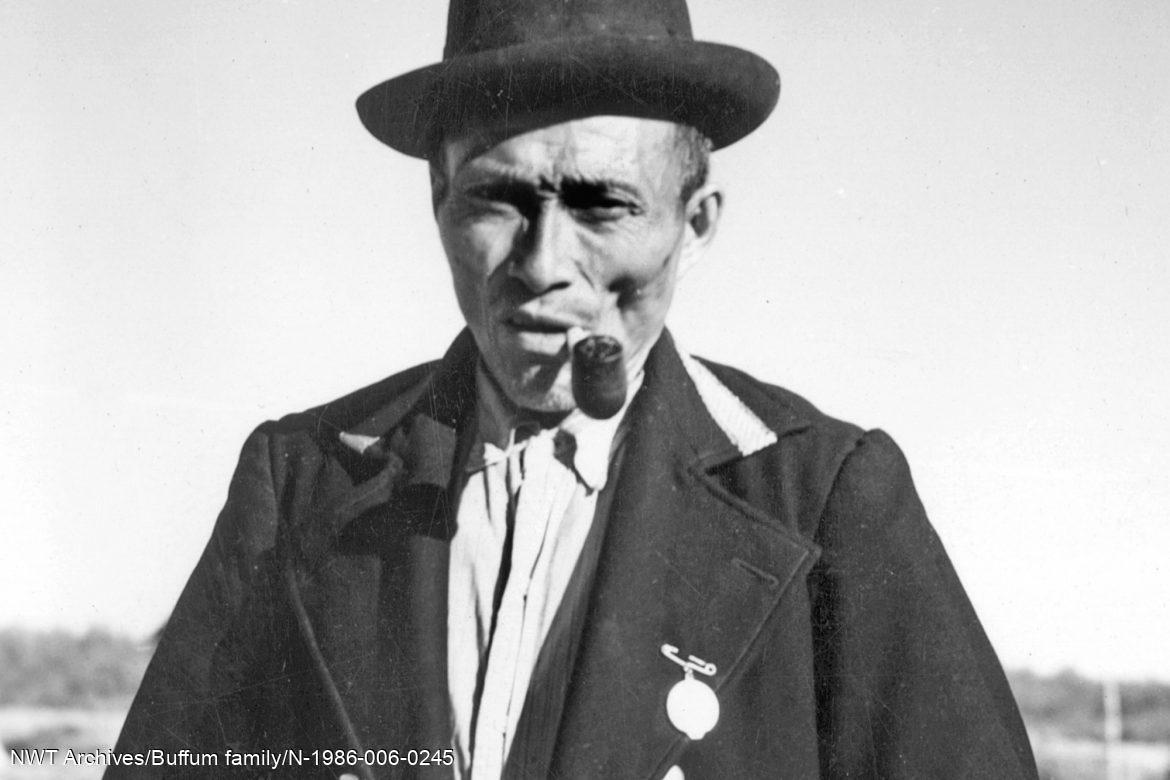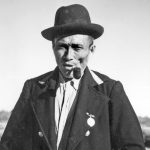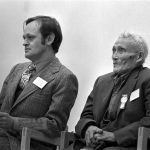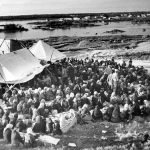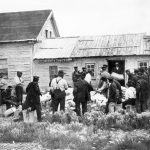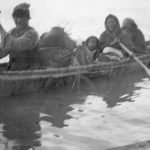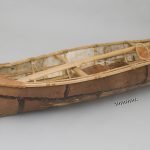1936
Chief Jimmy Bruneau
Jimmy Bruneau was born on Tłı̨chǫ traditional land— Mǫwhı̀ Gogha Dè Nı̨ı̨łèe— between the Sahti (Great Bear Lake) and the Tıdee (Great Slave Lake). He was born when Tłı̨chǫ Dene followed the annual patterns of life, including hunting, fishing and trapping, with occasional visits to the trading posts for supplies. Jimmy’s father, Dzimi, was a k’aàwı (traditional leader). He also functioned as the trading chief or middle person and negotiated good trading deals for himself and the Dechılaagot’ıì (the Edge of the Woods People). Dzimi died when Jimmy was 16 years old, but he continued to learn how to do things from his uncle, who became the next k’aàwı.
Jimmy’s family moved around the north arm of Great Slave Lake. He married Anne, and though they had 12 children, only their daughter Susie lived to adulthood. Jimmy was 40 years old when Treaty 11 was signed by his Uncle Mǫwhì. Mǫwhì signed because he believed that the treaty would guarantee the Tłı̨chǫ would always have the right to hunt, fish and trap on their traditional lands. He understood the treaty as a recognition of peace and friendship that would ensure the provision of medical care and education.
In 1936, with the death of Mǫwhì, Jimmy Bruneau became Chief in the Tłı̨chǫ. For almost 35 years, Jimmy Bruneau worked to help Tłı̨chǫ navigate the changes brought on by the kweèt’ıį̀ (white people). He spoke against the Canadian government’s interpretation and neglect of Treaty 11. Chief Bruneau worked to get a school in his community, so the children did not have to cross Great Slave Lake to a residential school in Fort Resolution. He wanted the students to find the Tłı̨chǫ way in the kweèt’ıį̀ education system.
Chief Jimmy Bruneau died in 1975. Chief Bruneau moved through a transitional time of massive change in the NWT and is honoured by the naming of the Chief Jimmy Bruneau school in 1971 in Behchokǫ̀.
